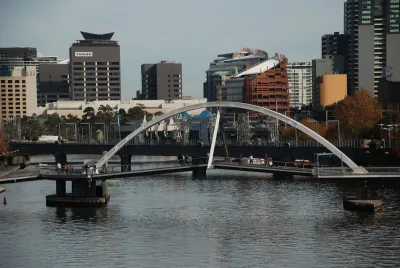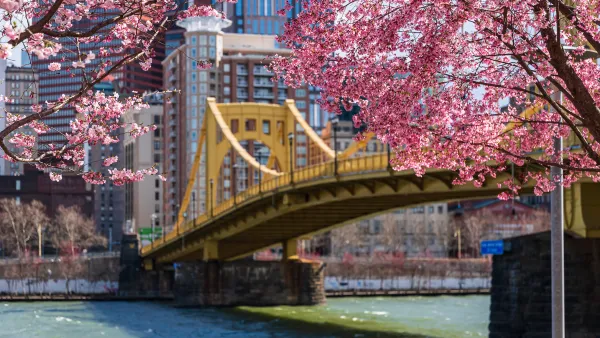Melbourne's long-range plan for development through 2050 envisions denser neighborhoods, built around the idea of 20-minute neighborhoods.

The Plan Melbourne 2017-2050 long-range plan released last week has offered some innovative changes to the city's current planning scheme to address an anticipated growth from 4.5 million to 8 million residents between now and 2050. The plan would remove current limitations that only permits two dwelling units per residentially zoned lot. Urban Development Institute of Australia Victorian CEO Danni Addison is supportive of the proposed density increases, noting that it will give middle- to low-income resident an opportunity to live in Melbourne's inner suburbs. John Masanauskas of the Herald Sunreports that the plan's detractors worry about the loss of the city's suburban character, losing its livability and becoming "a concrete jungle."
However, the plan has also introduced requirements for maintenance of minimum garden space for lots greater than 400 square meters (approx. 4,300 sq. ft), which has earned the support of residents who love their "Aussie backyard". The plan also seeks to create 20-minute neighborhoods that will allow residents to access basic needs within a 20-minute trip without the use of a car.
The concept involves reducing car use by encouraging more active modes of transport while creating mixed-use community areas of varying densities.
Under Plan Melbourne 2017-2050, people should be able to meet most of their everyday needs within a 20-minute walk, cycle or public transport trip from their home, but not including travel to work.
Each neighbourhood would have an activity centre with shops, cafes, service businesses and community hubs, while residents would also have access to local schools, sporting facilities and parks.
The Plan Melbourne 2017-2050 document can be found online, here.
FULL STORY: Andrews Government to force developers to offer minimum garden space under Plan Melbourne

Analysis: Cybertruck Fatality Rate Far Exceeds That of Ford Pinto
The Tesla Cybertruck was recalled seven times last year.

National Parks Layoffs Will Cause Communities to Lose Billions
Thousands of essential park workers were laid off this week, just before the busy spring break season.

Retro-silient?: America’s First “Eco-burb,” The Woodlands Turns 50
A master-planned community north of Houston offers lessons on green infrastructure and resilient design, but falls short of its founder’s lofty affordability and walkability goals.

Test News Post 1
This is a summary

Analysis: Cybertruck Fatality Rate Far Exceeds That of Ford Pinto
The Tesla Cybertruck was recalled seven times last year.

Test News Headline 46
Test for the image on the front page.
Urban Design for Planners 1: Software Tools
This six-course series explores essential urban design concepts using open source software and equips planners with the tools they need to participate fully in the urban design process.
Planning for Universal Design
Learn the tools for implementing Universal Design in planning regulations.
EMC Planning Group, Inc.
Planetizen
Planetizen
Mpact (formerly Rail~Volution)
Great Falls Development Authority, Inc.
HUDs Office of Policy Development and Research
NYU Wagner Graduate School of Public Service




























